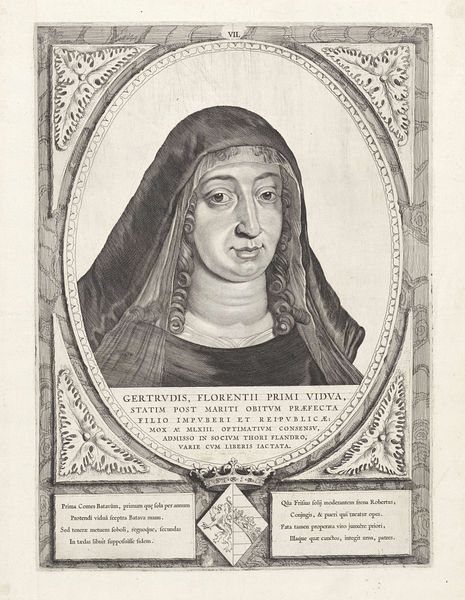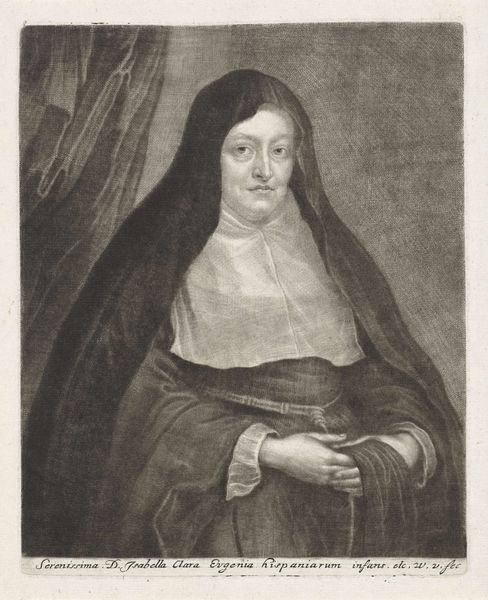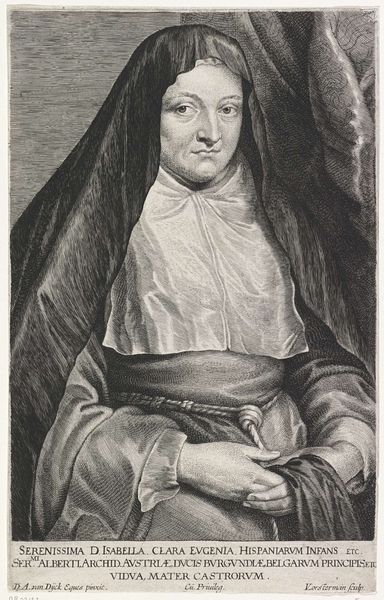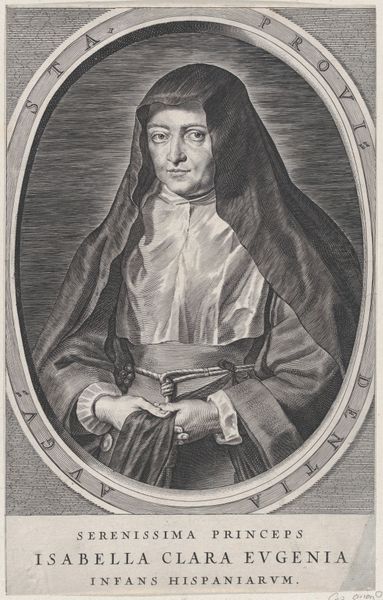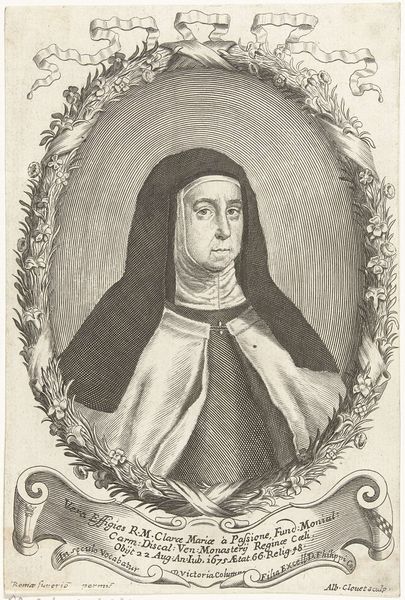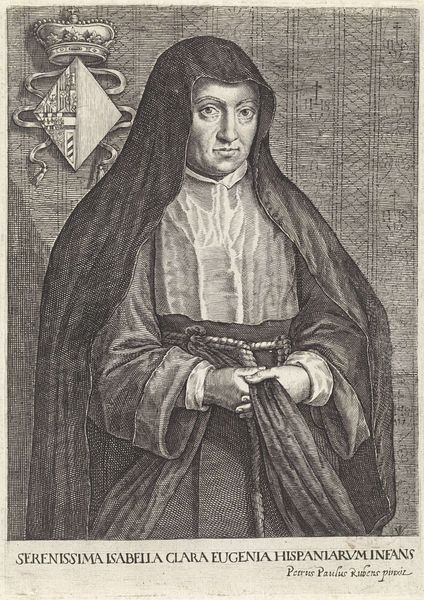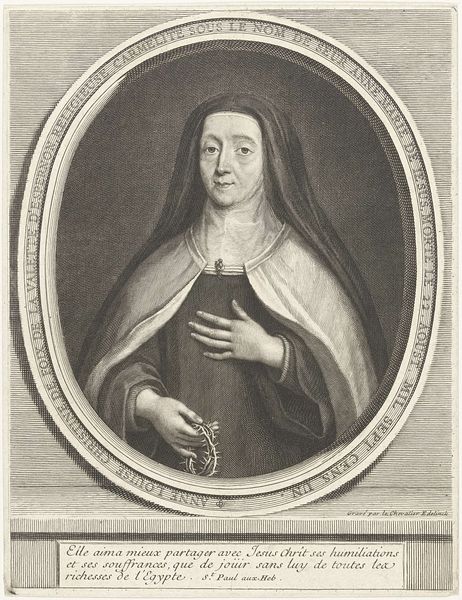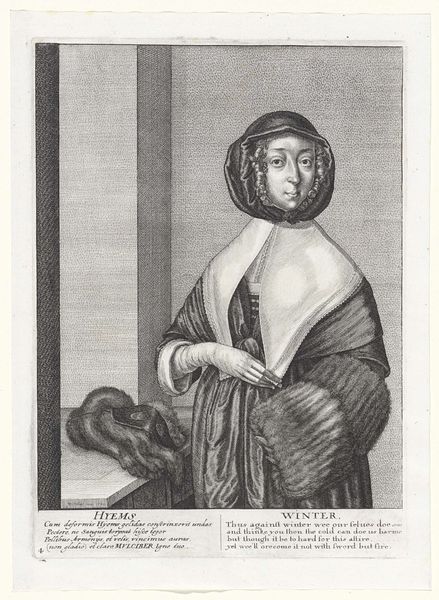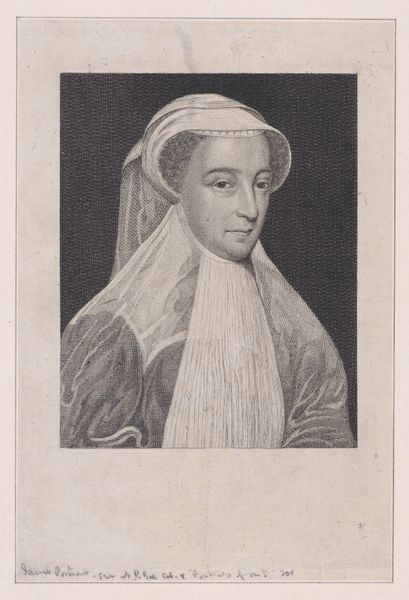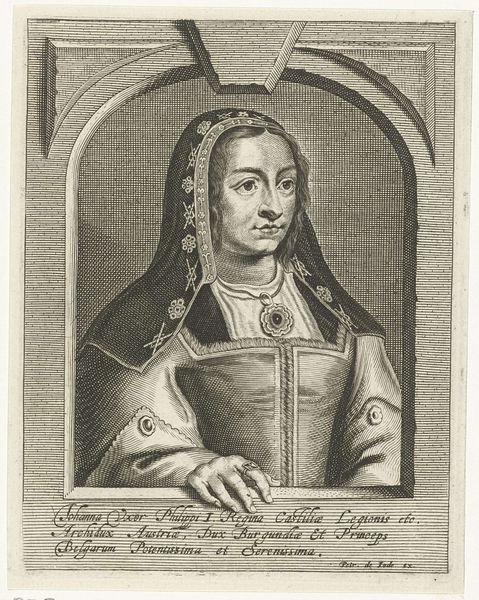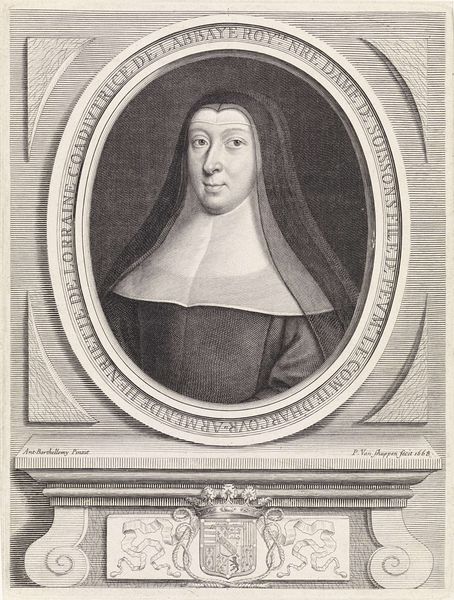
print, engraving
#
portrait
#
baroque
# print
#
old engraving style
#
engraving
Dimensions: height 139 mm, width 84 mm
Copyright: Rijks Museum: Open Domain
This engraving of Philippine van Gelder was made by Pieter van Schuppen in 1686. The print preserves the image of a woman who was born into nobility in the late 15th century and chose to enter a convent. The politics of imagery were profoundly shaped by the Reformation in the century before this print was made. In the Catholic regions of Europe, images of holy figures were seen as essential to religious devotion. Yet, in the Protestant Netherlands, such images were viewed with suspicion as forms of idolatry. Here, Van Schuppen uses the medium of printmaking to spread the image of a pious woman to a wider audience. The work speaks to the cultural climate of the Dutch Republic. To understand its place in the period we could look at the archives of religious orders and charitable organizations, which provide insight into women’s lives. In this way, we can see the role of art in shaping social memory.
Comments
No comments
Be the first to comment and join the conversation on the ultimate creative platform.
